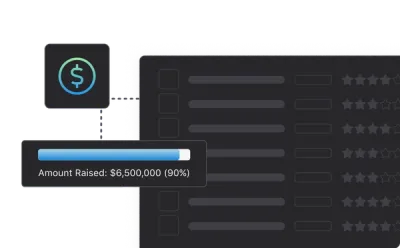Over the last few months we’ve directly helped a few of our customers with their venture fundraise. One of the questions that continues to come up is, “how should I display my sales and marketing plan in my pitch deck?”
In order to best help our customers, we’ve set out to research and find out how to best display go-to-market strategies.

Your Business Model
Your business model often goes hand-in-hand with your go-to-market and customer acquisition strategy. At the end of the day, an investor needs to make a return on their investment. In order to do so, investors need to clearly understand how your company will make revenue.
In the Guy Kawasaki pitch deck template, Guy suggests sharing your business model in slide 5 and following that with your marketing and customer acquisition plan in slide 6.
Assuming you have a solid understanding of your business model, you’ll need to clearly articulate how you will acquire new customers and retain existing customers.
Your Go-to-Market Strategy
Being able to show a repeatable and efficient process for acquiring new customers is a must. Investors want to make sure that they will not be throwing their money down the drain. Going into a pitch with potential investors you need to understand your go-to-market strategy like the back of your hand.
Make sure your GTM strategy slide is easily digestible and can be easily understood without added context.
Still developing your GTM strategy? Check out how Nick Loui, CEO and Founder of PeakMetrics, found their first customers below:
Customer Acquisition Costs & Strategy
One of the key metrics that investors will want to understand is your costs to acquire a new customer. (Learn more about CAC here).
It is important to demonstrate to your investors that your customer acquisition costs are less than your customer lifetime value. This will help showcase your path to profitability.
Ablorde Ashigbi is the Founder and CEO of 4Degrees. Earlier this year, Ablorde wrapped up a round of financing for 4Degrees. We went ahead and asked Ablorde what tips he has for founders looking to showcase their CAC in a pitch deck. His response:
- Don’t present CAC without a corresponding view of LTV
- Don’t present a blended CAC (including both organic and paid – only include conversions that came from paid channels)
- For earlier stage companies, payback period equally (maybe more) important than pure LTV / CAC
When it comes to presenting your GTM strategy and customer acquisition costs it all comes down to simplicity. An investor should be able to take a look at your slide and know exactly how your business functions.

Under the current circumstances and in the wake of larger companies failing to find profitability, a financially responsible customer acquisition strategy is more important than ever. If you have your own tips for presenting your GTM and customer acquisition strategy, we’d love to hear it. Shoot a message to marketing at visible dot vc.
Related Resource: Customer Acquisition Cost: A Critical Metrics for Founders




